Forlì, a city laid out along the route of the Via Emilia and enclosed between the valleys of the MontoneandRonco rivers, has been able to present itself and be appreciated by the art-loving public since 2005, with the unforgettable exhibition Marco Palmezzano and the Renaissance in Romagne, with quality exhibition projects born thanks to the collaboration between the municipal administration and the Fondazione Cassa dei Risparmi di Forlì. While waiting for the next exhibition with which Dante Alighieri will be celebrated seven hundred years after his death(Dante. The vision of art, Forlì, Musei civici San Domenico, March 12-July 4, 2021), within the urban fabric of Forlì other realities know how to excite the visitor. The starting point of this pleasant cultural stroll and the center of city life is the main square, now named after the illustrious Forlian Aurelio Saffi, which is scenically overlooked by some of the city’s main historic buildings, in particular the basilica of San Mercuriale, the twentieth-century Palazzo delle Poste and the large architectural complex of the Palazzo comunale. Branching off from the square are the city’s major avenues and narrow alleys, the last witnesses of the medieval urban layout, which can be walked to reach the various permanent art collections.
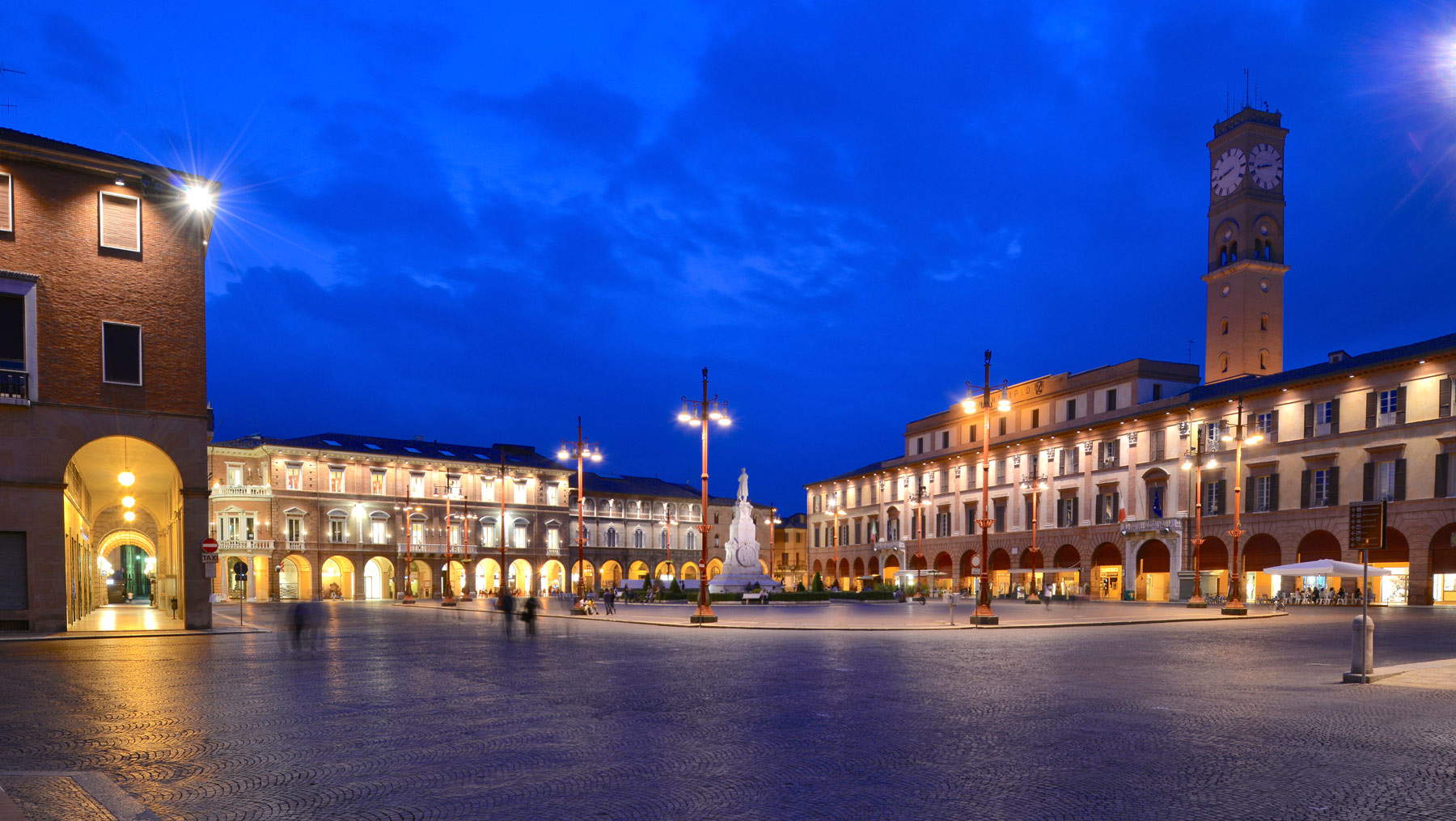 |
| Forlì, Piazza Aurelio Saffi. Photo Luca Massari |
Palazzo Romagnoli. Collections of the twentieth century.
Walking up Corso Garibaldi, past the Piazza del Duomo at the center of which stands the column with a seventeenth-century statue of the Madonna del Fuoco, the patron saint of the city of Forlì, we come to Via Albicini a short distance away, at whose street number 12 the beautiful monumental portal of Palazzo Romagnoli opens.
The building, a noble palace whose current configuration dates back to the 18th century, has become home to the Collections of the Twentieth Century since 2013 after a long restoration. On the ground floor, the visit begins with the Verzocchi Collection, a true unicum in the national and international cultural scene, both for the high artistic value of the works present and for the idea that animated and led to the creation of this rich gallery of paintings. The collection stems from the desire of Forlì-born entrepreneur Giuseppe Verzocchi to bring together, around the common theme of work, Italian masters representative of the main artistic currents of his time. The entrepreneur personally selected and contacted about seventy artists, requesting the execution of a painting of 90 x 70 cm format dedicated to the cardinal reason of his life, work, and imposing in the painting the discreet insertion of a small refractory brick with the trademark “V&D,” a distinctive product of his company and a sort of real personal coat of arms. After a public presentation at the Venice Art Biennial in 1950, Giuseppe Verzocchi donated his gallery of paintings to the city of Forlì, along with his correspondence with artists and drawings containing their self-portraits. The tour opens with the bright colors, in shades of green and red, of Fortunato Depero’s painting Lathe and Loom. The work shows side by side two opposing symbols of work; on the one hand, a symbol that Depero himself called “almost magical,” a “woman attentive at the loom, under an emerald light,” and on the other a man at the lathe, who is “heavy, inside fiery lights, among metallic ordnance and perspectives.” We can then admire in a rhythmic sequence from room to room, Emilio Vedova’s Factory Interior, Corrado Cagli’s The Potter, Gino Severini’s Symbols of Work, Renato Guttuso’s Sicilian Farmhand, Mario Mafai’s Coal Unloaders, Aligi Sassu’s Plowed Field, Thearchitrave by Massimo Campigli, Il lavoro by Mario Sironi, Costruttori by Carlo Carrà, Il piccolo fabbro by Filippo de Pisis, Lo scultore by Achille Funi, Forgia di Vulcano by Giorgio De Chirico, Lavoro by Giuseppe Capogrossi, and many other paintings up to an overall total of seventy works.
A wide mixed marble staircase then leads to the upper floor where we find Giorgio Morandi ’s paintings and graphic works from the Ada and Arturo Righini collection on display. Three small oil-on-canvas paintings that share the theme of flowers(The Poppy, Chrysanthemums, Roses) and six etchings including Morandi’s beloved places of the Via Fondazza courtyard and the Grizzana knoll. In an adjoining room, entirely frescoed with architectural wings and cupids, as many as seven sculptures by Adolfo Wildt from the donation of Raniero Paulucci di Calboli, collector and patron of the Milanese sculptor, are on display. Raniero Paulucci di Calboli, of noble and ancient lineage from Forlì, after a long diplomatic career that ended with the post of ambassador to Tokyo, he was a senator of the Kingdom and, to crown his strong social commitment to the most fragile classes, in 1926 obtained the presidency of the “International Union for the Protection of Children.” His collection makes it possible to reconstruct Wildt’s artistic journey from his earliest production up to 1920, with works distinguished by the refined workmanship of the stone material and the preciousness of the surfaces, enriched by gilded metal chromes. Looking at these sculptures, one cannot help but be enveloped by the enigmatic and timeless smile of Fulcieri’s portrait, whose archetype may well be found in the face of an Etruscan statue. Fulcieri, Raniero’s only male son, was a gold medalist for military valor in World War I and a promoter of the “Action Committee among maimed and invalids and war wounded,” died in 1919 from the consequences of spinal cord injuries sustained two years earlier on the Karst, and his Milanese friends to remember him, commissioned from the sculptor this iconic golden-eyed bust later purchased by his father. The donation of the entire sculpture collection was desired by testamentary bequest by Raniero, as a final and imperishable link with his hometown and as an extreme and poignant tribute to his son. “Fulcieri’s father” were the only words that, in addition to the name and year of birth and death, this man, a great protagonist of the international political and diplomatic scene of the early 20th century, wanted engraved on his tombstone.
Finally, the last rooms of the palace unfold pictorial and sculptural works that constitute a first overview of the multifaceted artistic production of Romagna and Emilia in the early and second half of the twentieth century, and that allow us to emphasize the brief but intense experience of the Cenacolo Artistico Forlivese, formed in 1920 on the initiative of the painter Giovanni Marchini. Testifying to the scenario, by no means local, on which the artists presented here (Carlo Stanghellini, Giannetto Malmerendi, Maceo Casadei, etc.) are the painting by Giacomo BallaSiamoin quattro, donated by “Balla futurista al Cenacolo Artistico Forlivese,” and the beautiful self-portrait by Giovanni Marchini himself, in which the precious decorations of the robe and the screen in the background hark back to the long wake of the influence of Japanese art on Western painting.
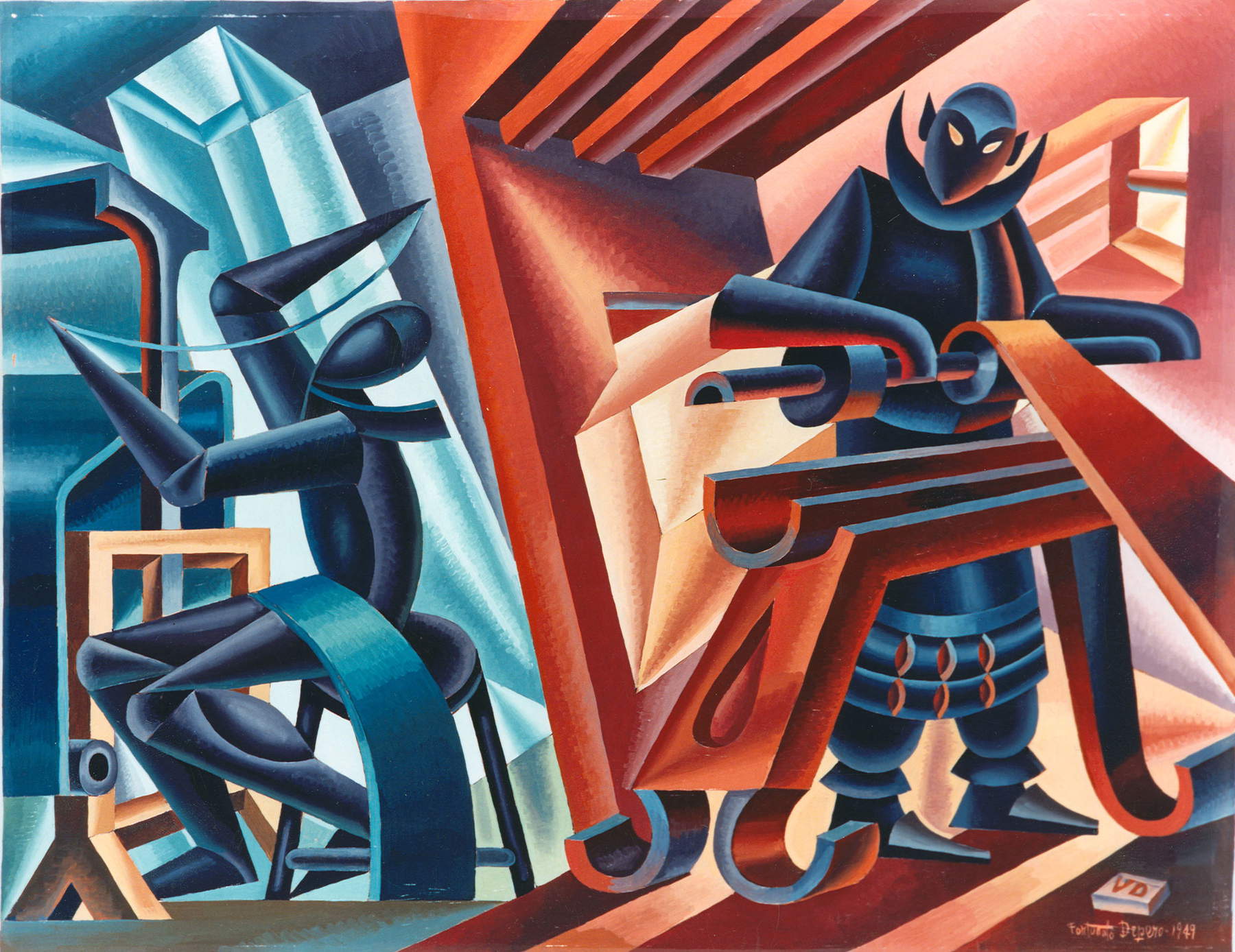 |
| Fortunato Depero, Lathe and Loom (1949; Forlì, Palazzo Romagnoli, Collections of the Twentieth Century). Forlì Civic Museums Photographic Archives |
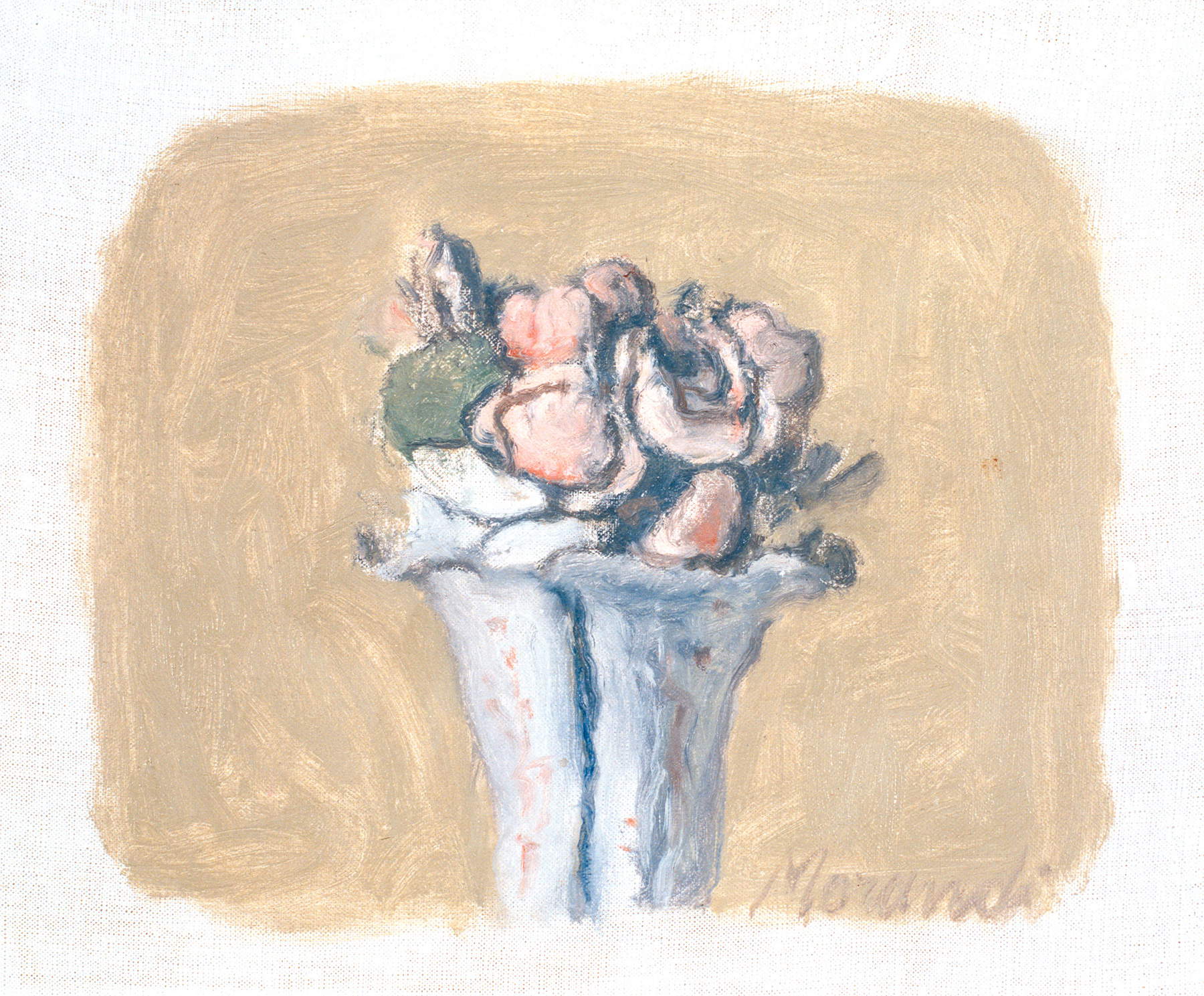 |
| Giorgio Morandi, Roses (1962; Forlì, Palazzo Romagnoli, Collezioni del Novecento). Photographic archives Musei Civici Forlì |
 |
| Adolfo Wildt, Fulcieri Paulucci de Calboli (1919; Forlì, Palazzo Romagnoli, Collections of the Twentieth Century) .Forlì Civic Museums Photographic Archives |
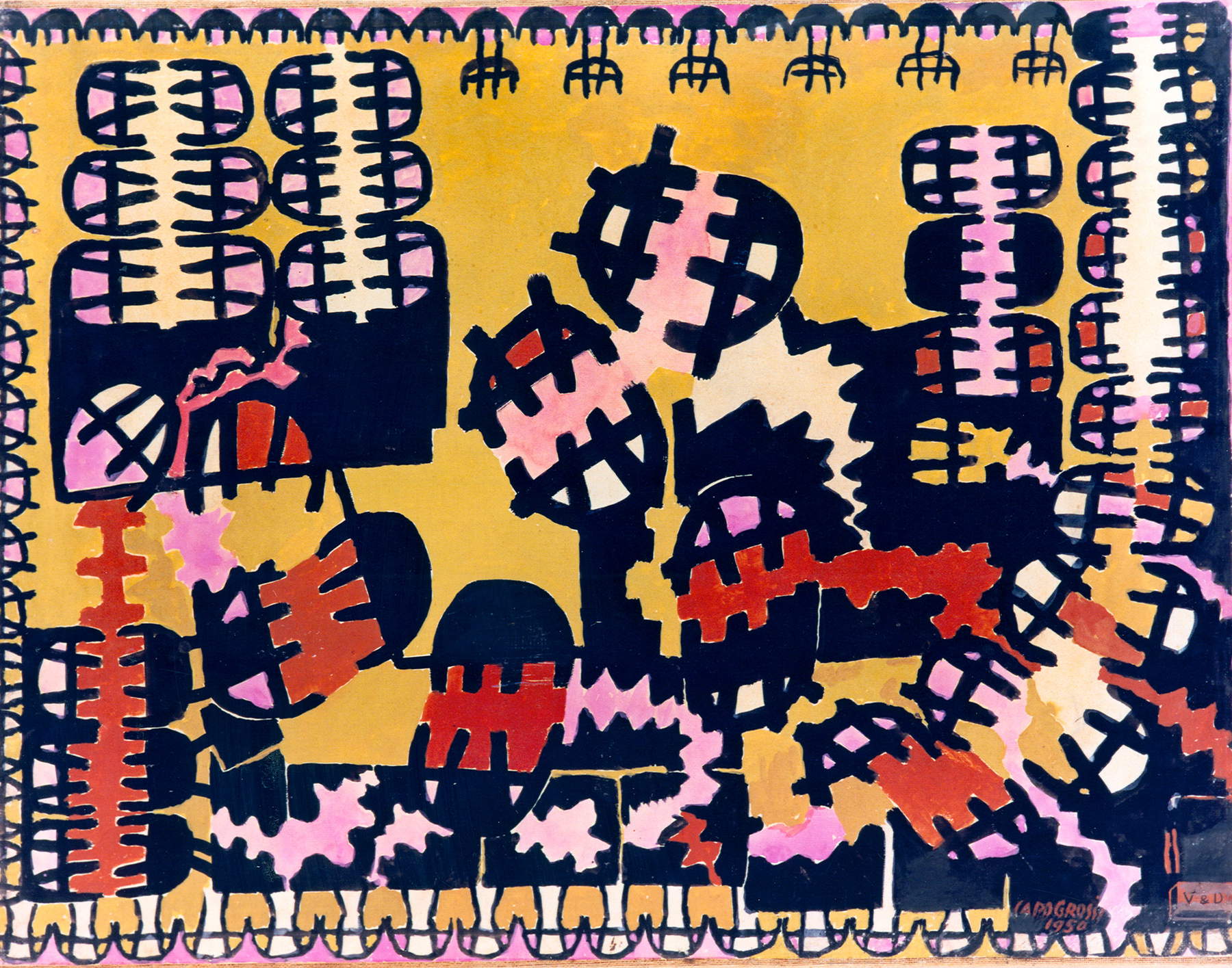 |
| Giuseppe Capogrossi, Lavoro (1950; Forlì, Palazzo Romagnoli, Collezioni del Novecento). Photographic archives Musei Civici Forlì |
San Domenico Museums. Civic Art Gallery.
Leaving Palazzo Romagnoli behind, in a few steps it is possible to reach the area affected by the large Dominican convent complex, founded, according to tradition, by St. Dominic himself on his return journey from Rome, where he had gone for the final approval of his Order by Honorius III. The complex was built starting in 1229 in a still unurbanized area of the city and gradually developed to its present configuration characterized by buildings arranged on two cloisters and flanked by a large one-room church dedicated to St. James. The monumental complex during the 19th century was then used as a military hospital, a gendarmerie, a food depot and barracks for passing troops; abandoned for decades, it was the subject of an articulated restoration project, which in 2004 made it possible to return it to the community and make it the new center of cultural life in Forlì.
The visitor is welcomed into the large hall that was once used as a refectory, and, after walking through the corridors overlooked by the cells reserved for the convent’s guests, reaches the first floor, where a substantial nucleus of works from Forlì’s art collections, corresponding to the ancient section of the Civic Art Gallery, is on display.
In the present exhibition, after a number of pictorial and sculptural works from the 13th and 14th centuries, including some notable examples such as the small panel with Madonna and Child by Vitale da Bologna, the protagonist is the artistic culture of the 15th century, which opens with the two refined panels of theOration in the Garden and the Nativity by Beato Angelico. The most represented character in the collection is the painter Marco Palmezzano, a “dear alumnus” of Melozzo and master of perspective vision. Among the fourteen works on display, the viewer is enraptured by the monumental altarpiece of The Annunciation with its glazed and compact oil painting, the scenic landscape with a turreted town opening up at the foot of rugged mountains, and the complex architecture of a vaulted nave on breccia columns in which the encounter between the archangel Gabriel and the Virgin takes place. The angel has just concluded his flight and his lips are parted to utter his proclamation; the Virgin is a blond maiden made monumental by the falls of her drapery. But, as Stefano Tumidei wrote, in this work “to the contemporaries of Forlì, it must have seemed miraculous above all the effect of the lectern with its doors wide open [...]. In tralice on the plane and with barely rotated axonometry, the breviary flaunts its open pages, which tend to leaf through because of the hardness of the binding or the thickness of the parchment, certainly not because of a sudden burr of wind, unimaginable in this motionless afternoon and in these suspended atmospheres, of an almost unreal fixity.”
In the museum rooms we then see the sixteenth-century Mannerist paintings of Livio Agresti, Francesco and Pier Paolo Menzocchi, and Livio and Gian Francesco Modigliani unfold; while the preeminent work within the rooms devoted to the seventeenth century is the Fiasca fiorita, one of the most emblematic and discussed still lifes in the history of Italian art. The tour ends in a small room designed to house the Canova sculpture of Hebe, the goddess “with beautiful ankles.” The Forlì statue is the fourth and final version of the successful iconography, all of Canovian invention, of the young cupbearer of the Olympian gods. A personification of the already fully Romantic motif of escaping youth and the prototype of statues of the “aerial genre,” with its dynamic of the figure in flight and the balanced compositional balance of the pose of the arms it knows how to surprise the eye from whatever point one looks at it. The young woman is fixed as if in the act of landing, with her dress completely bulging from the air, and here Canova, as Pindemonte observed, succeeded in sculpting “the steps.” The Forlì version of this figure from the ancient myth, skillfully actualized by the sculptor, is striking for the beautiful patina of the stone surface respected by past restorations and for the successful gilded details of the necklace and the ribbon that holds the hair, precious details that add to the gilded metal cup and amphora. Canova, famous for the painterly quality of his sculpting, also adopted the practice of coloring his sculptures, thus creating on the surface a kind of patina capable of transforming hard marble into soft flesh. Also fascinating in theHebe of Forli is the interplay created by balanced contrasts, the light coloring of the epidermal parts against the luminous whiteness of the drapery, and the opposition between naked parts and portions completely enveloped by the fluctuating robe. Cicognara wrote: “this Goddess, descending from heaven with divine and graceful incessation, at the same time mixing a cup of ambrosia to the father of the deities; and balancing herself forward by cleaving the air with a certain velocity, produces the most natural effect that the cloths repelled backward can draw without any kind of affectation the naked subject. The raising of an arm to pour liquor from the vase so amiably unfolds the whole outline of the figure, that although the eye finds it draped with extreme decency, nevertheless the avidity of the gaze discerns every feature, nothing but the first freshness of the forms.”
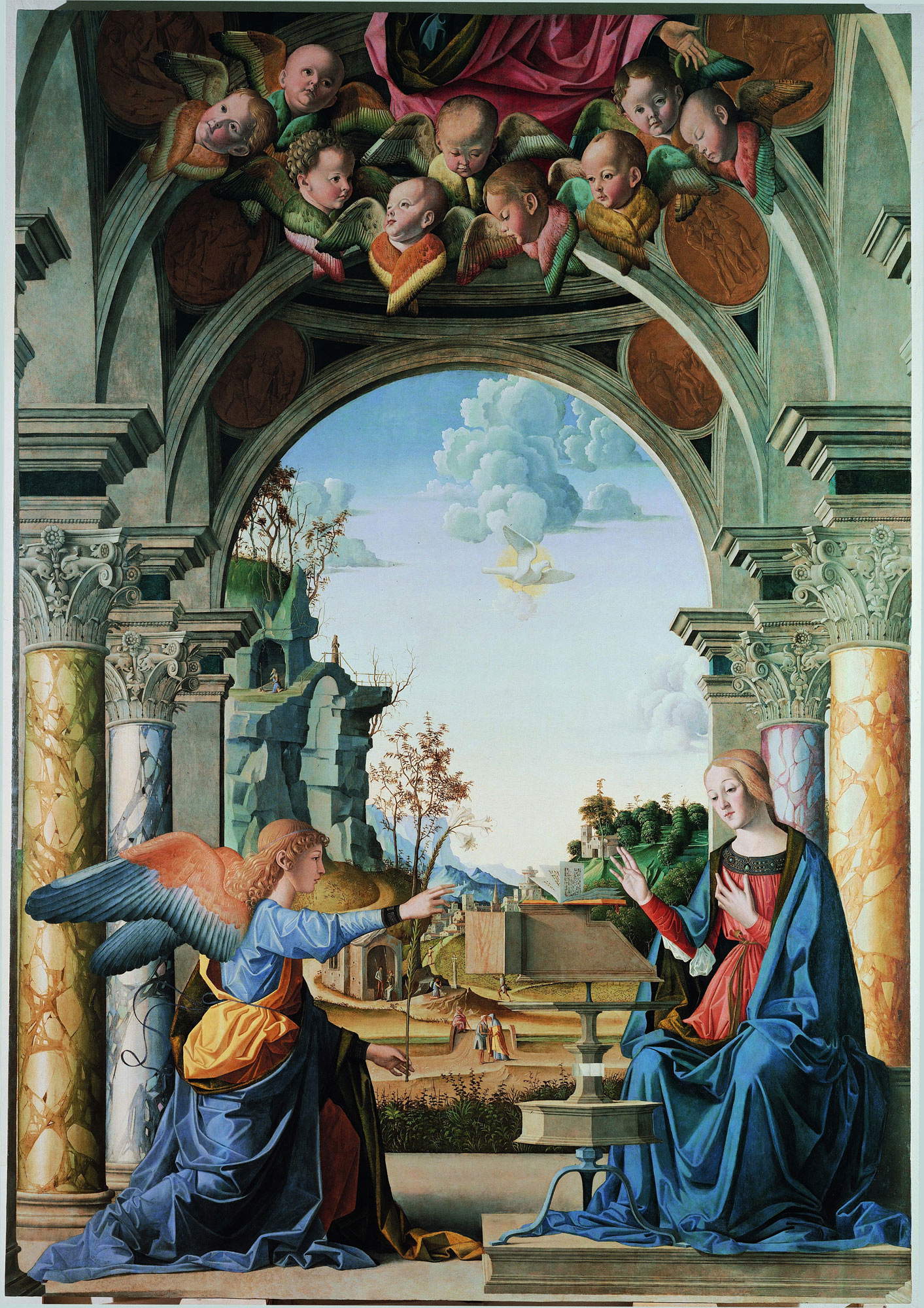 |
| Marco Palmezzano, Annunciation (c. 1495-1497; Forlì, Musei San Domenico, Pinacoteca civica). Photographic Archives Civic Museums of Forlì |
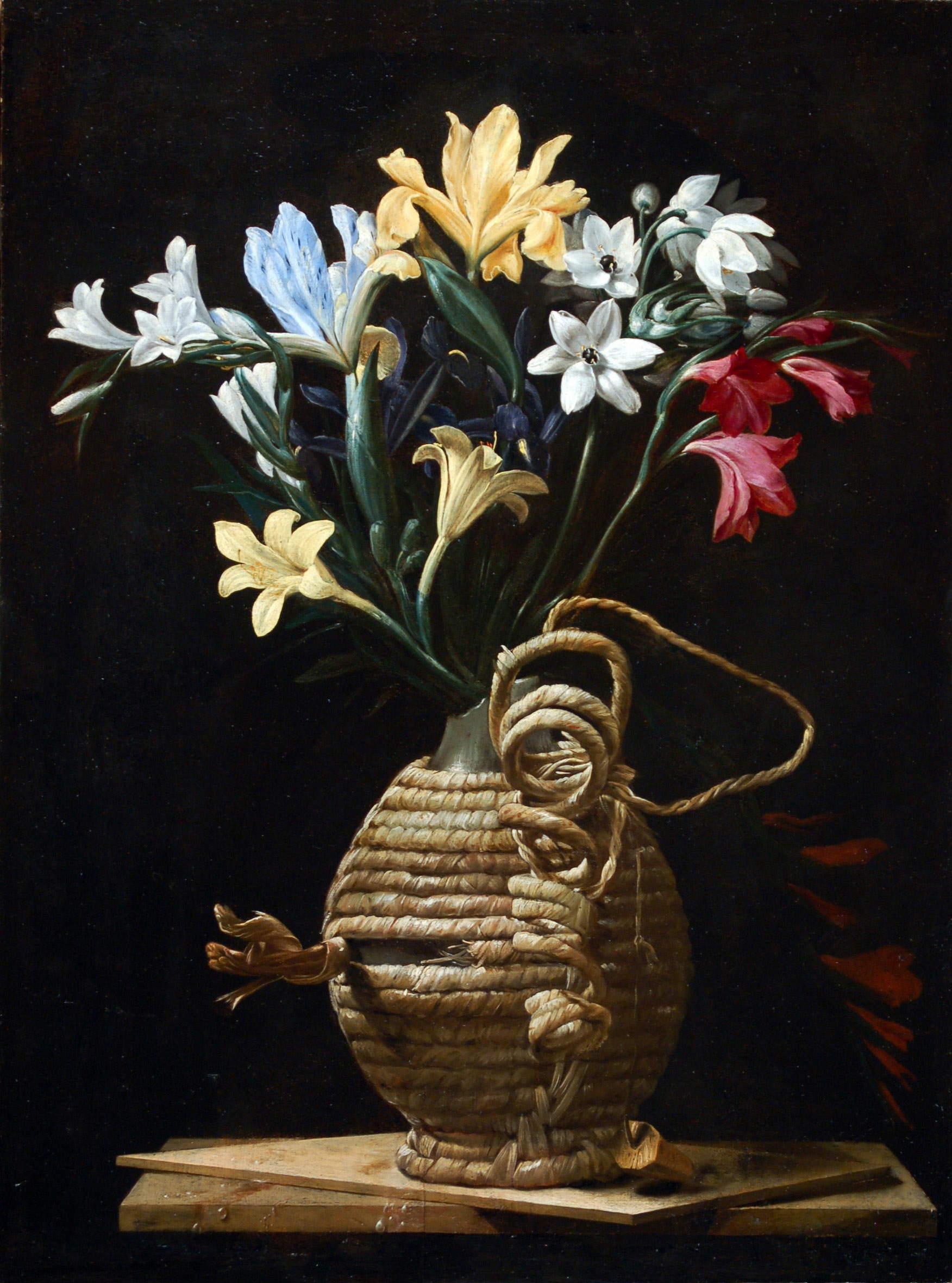 |
| Maestro della Fiasca di Forlì, Flask with flowers (ca. 1625-1649; Forlì, Musei San Domenico, Pinacoteca civica). Photographic Archives Musei Civici Forlì |
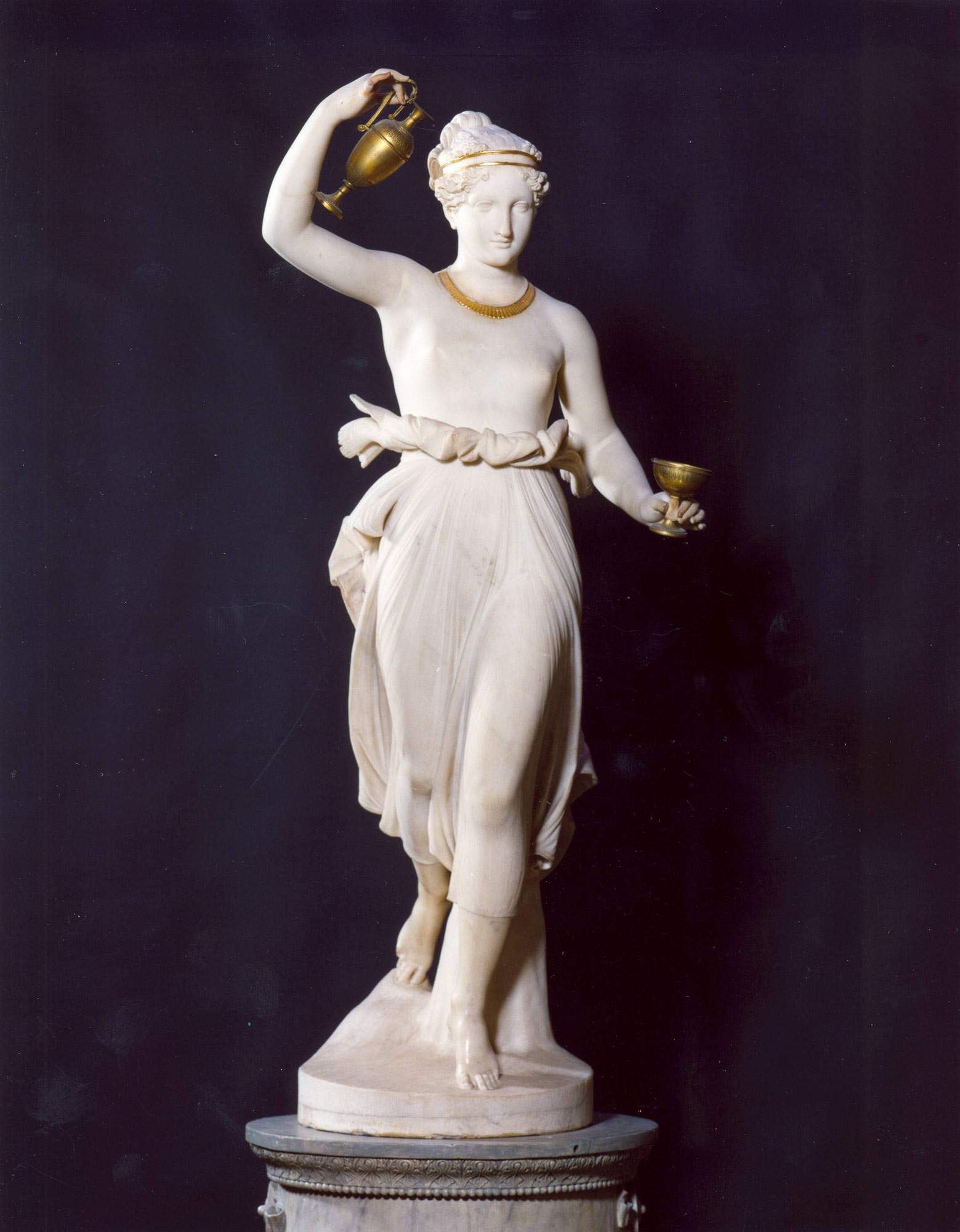 |
| Antonio Canova, Hebe (1816-1817; Forlì, Musei San Domenico, Pinacoteca civica). Photo by Giorgio Liverani |
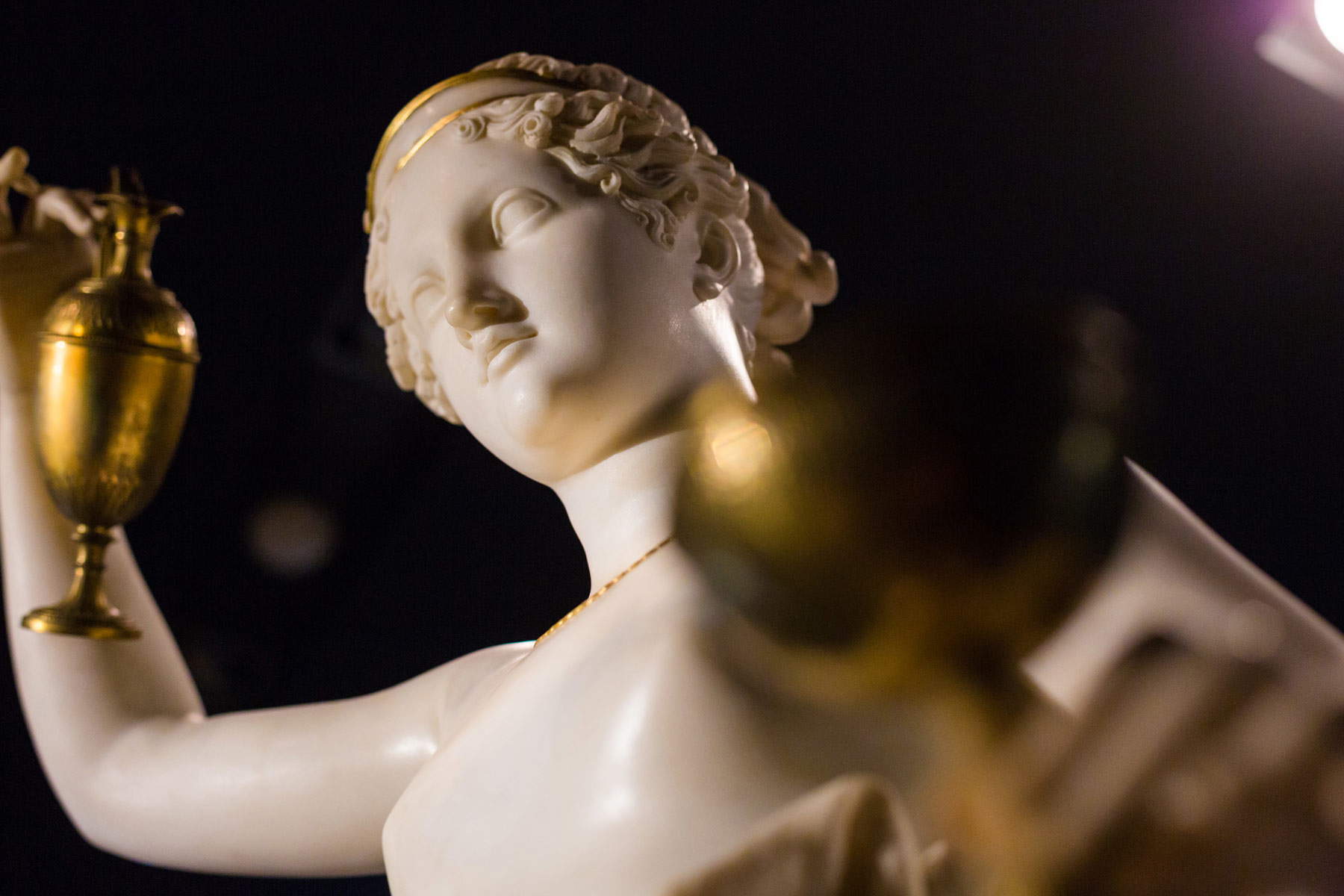 |
| Antonio Canova, Hebe, detail. Photo by Gianluca Naphtalina Camporesi |
Warning: the translation into English of the original Italian article was created using automatic tools. We undertake to review all articles, but we do not guarantee the total absence of inaccuracies in the translation due to the program. You can find the original by clicking on the ITA button. If you find any mistake,please contact us.